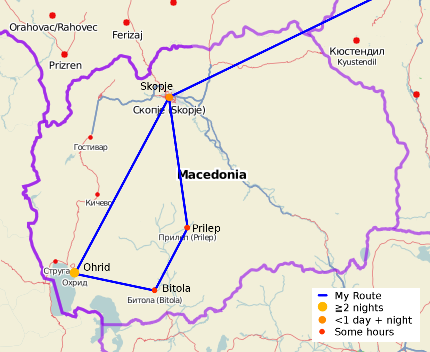I already told you, that my next stop is Sibiu (german: Hermannstadt), former Cultural Capital of Europe in 2007. If you expect all this modern things that happened and (partly) stayed, like in Graz, you might be disappointed, you can’t feel it. But the money in Sibiu was invested wisely, the centre has been well renovated and a huge pedestrian area has been developed. And it’s definitely worth. A short abstract of the history of Sibiu: Sibiu was founded in the 12th century by German settlers, but was destroyed by Mongols a hundred years later. Only about 100 inhabitants survived, who started to rebuild the town, but this time with heavy fortification. Soon Sibiu was wealthy again. As this region was threatened by many enemies, many castles and citadels were being built – like Braşov and Sighişoara, I visited before. Also many churches has been fortified, so called „Kirchenburgen“ were being built. And there are many, at least 300, maybe up to 700. About 140 still exist, but many need renovation.
In Sibiu I was couchsurfing again. This time it was pretty interesting, because my host was working for the protestant church, her current work was a EU proposal for the renovation of 18 of these fortified churches. I could even help a little bit. Unfortunately I didn’t meet one of her working colleagues (an urban planner from Berlin), who was responsible for the renovation of Sibiu for the year as Cultural Capital. I would have liked to hear some experiences from him.
So, back to my travel, I’m sure you want to see some pictures. Historic Sibiu has two parts, the Upper Town (for the merchants and rich) and the Lower town (for the workers). The Upper Town is arranged around three huge squares and has heavier fortification. The Lower Town has smaller buildings and narrow roads, crossroads are often enlarged to little squares. Everywhere in the historical centre, you have historical buildings (15th-18th century) and several churches.
On the last day in Sibiu I went to see some villages around Sibiu and two fortified churches. I wanted to take the tramway (there’s only one route left from the Southern end of Sibiu to one of the villages outside, Răşinari), but unfortunately I would have need to wait two hours. But there are some people who have some kind of informal collective taxi service, I could take one of these (for 2,5 Lei = 0,60). From Răşinari (german Städterdorf) I followed a hiking route to the next village, Cisnădioara (german Michelsberg). I couldn’t find all parts of the way, but finally I managed. I had some really impressive views on the way. In Cisnădioara there’s one old Romanesque fortified church on top of a hill, with a simple wall around. Then I walked to the next village, Cisnădie (german Heltau), which is actually a little town, with another, bigger fortified church.
I hope I didn’t bore you with my tale about churches, but I found them rather fascinating. Maybe you want to see them yourself? Take somebody with you who speaks German or Romanian, there aren’t many people who speak English in that region (and texts are often only in Romanian and German, maybe a short description in French in English – even on the signs, which were erected for 2007).
